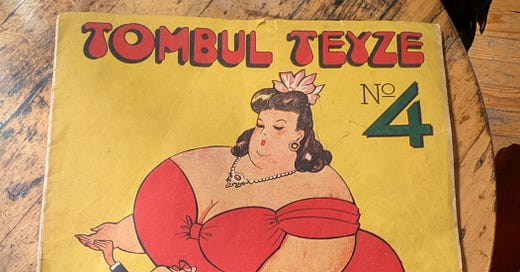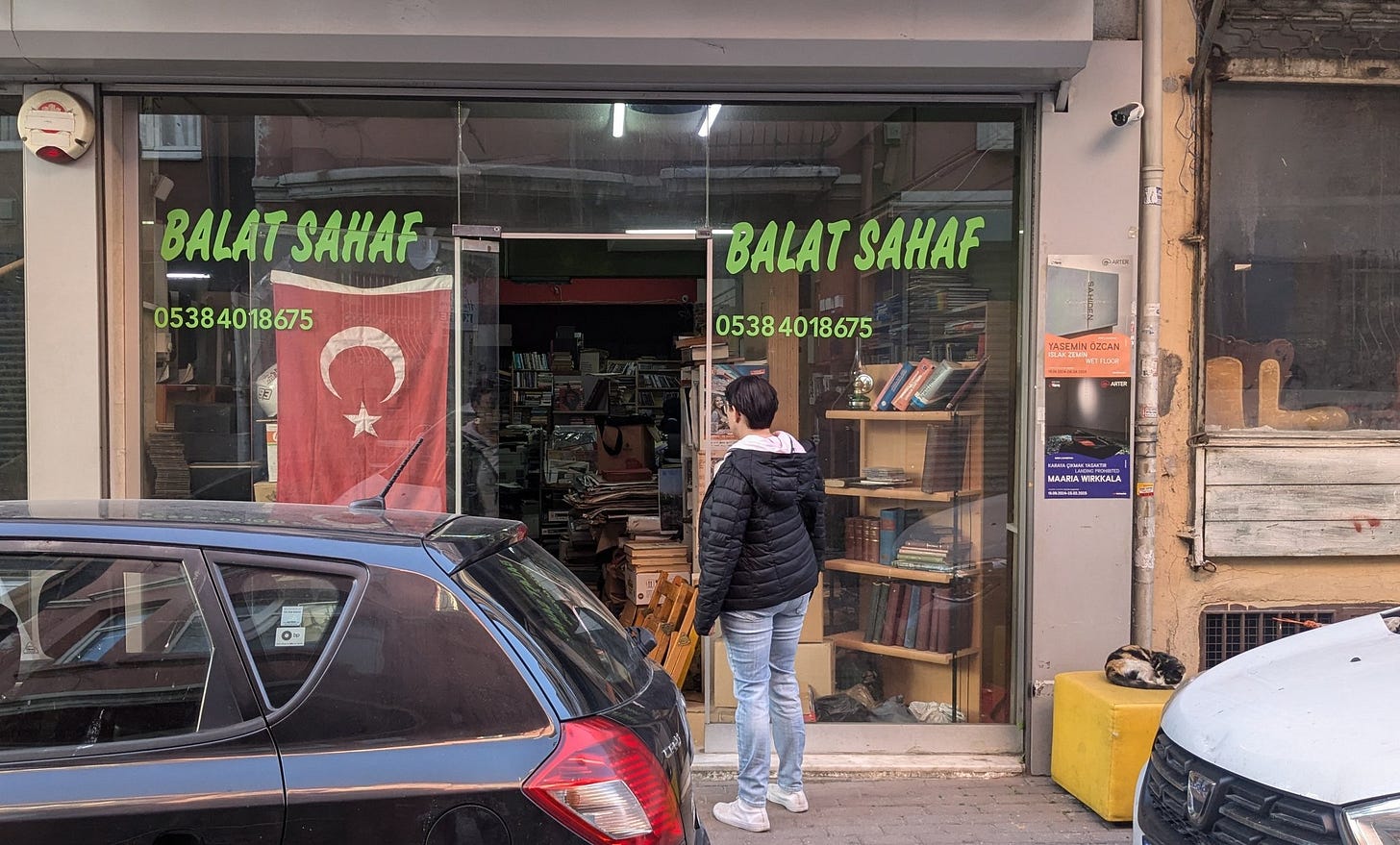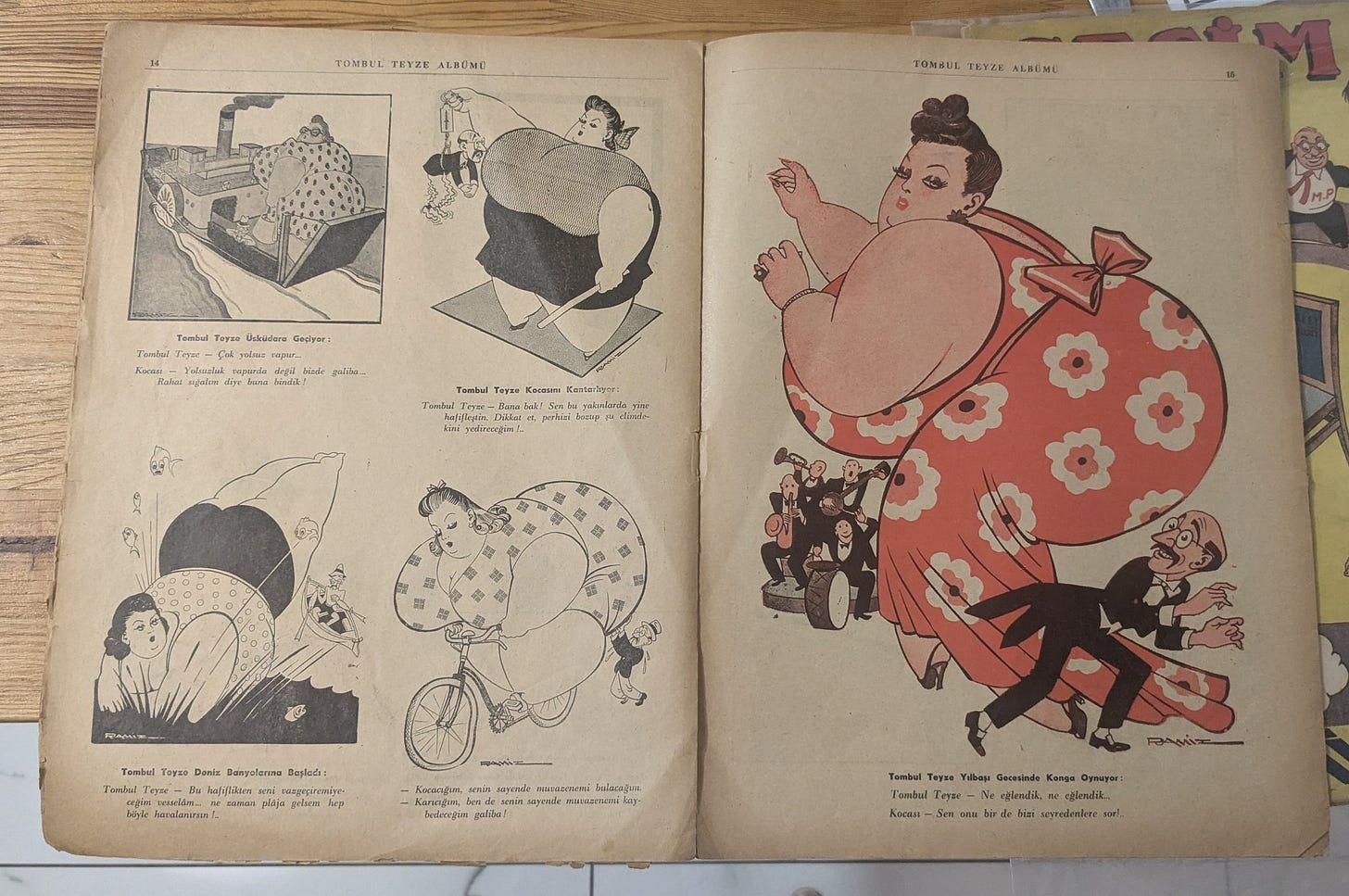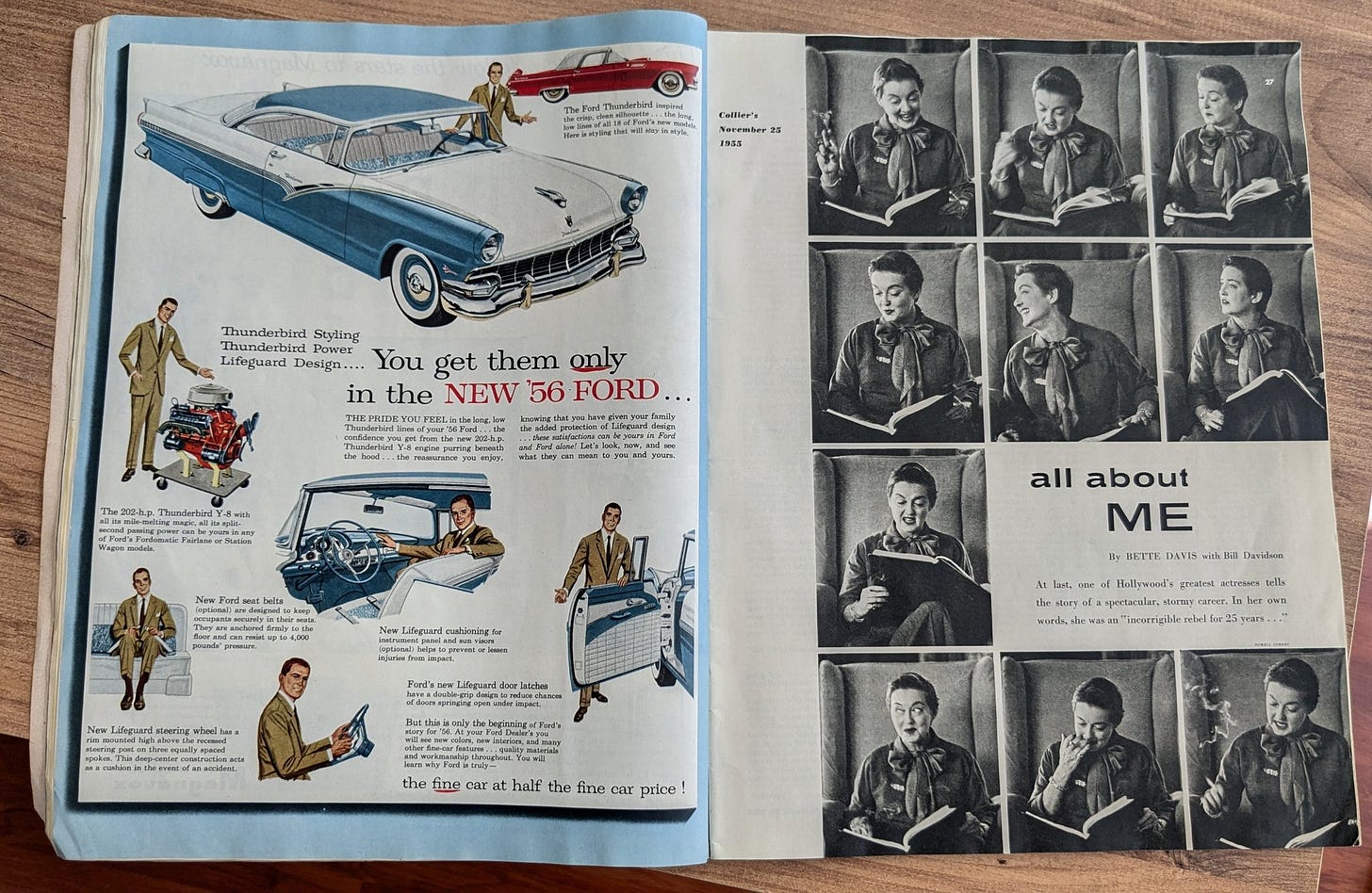Magazines, Chubby Aunts, and James Dean in Istanbul 4
The continuing adventures of a bibliophile in Turkey
Mid-century magazines (1940-1970) have a spellbinding quality to them. That’s because they’re filled with the best prose, pictures, art, photography, design, cartoons, that money could, at the time, buy. Contributors included the most talented writers, artists, designers and photographers of the age. Publishers were able attract them because they were flush. This was a golden age. TV hadn’t yet fully come into it’s own. Print was a big buy for advertisers. Magazines made lots of money. Editors and Art Directors teamed up to fashion beautiful flows of visually stunning, engaging narratives into one complete package. Not only are these publications beautiful, they are, for the serious collector at least, also filled with intrigue. Hundreds of talented people contributed to their pages. Not much is known about many of them.
The great magazine collector Dr. Steve Lomazow stressed the excitement of tilling new ground during a conversation I had with him a while back. Not as much research has been done on magazines relative to books, he told me. Listen here. This makes the hunt doubly fun.
I’ll give you a couple of for instances. Let's look at two magazines acquired last week.
This outsized specimen
found at an unassuming bookstore
in the Balat neighbourhood of Istanbul, where, incidentally, there are lots of antique shops, and houses with bay windows, "Jumbas," or balconies like these ones can be found.
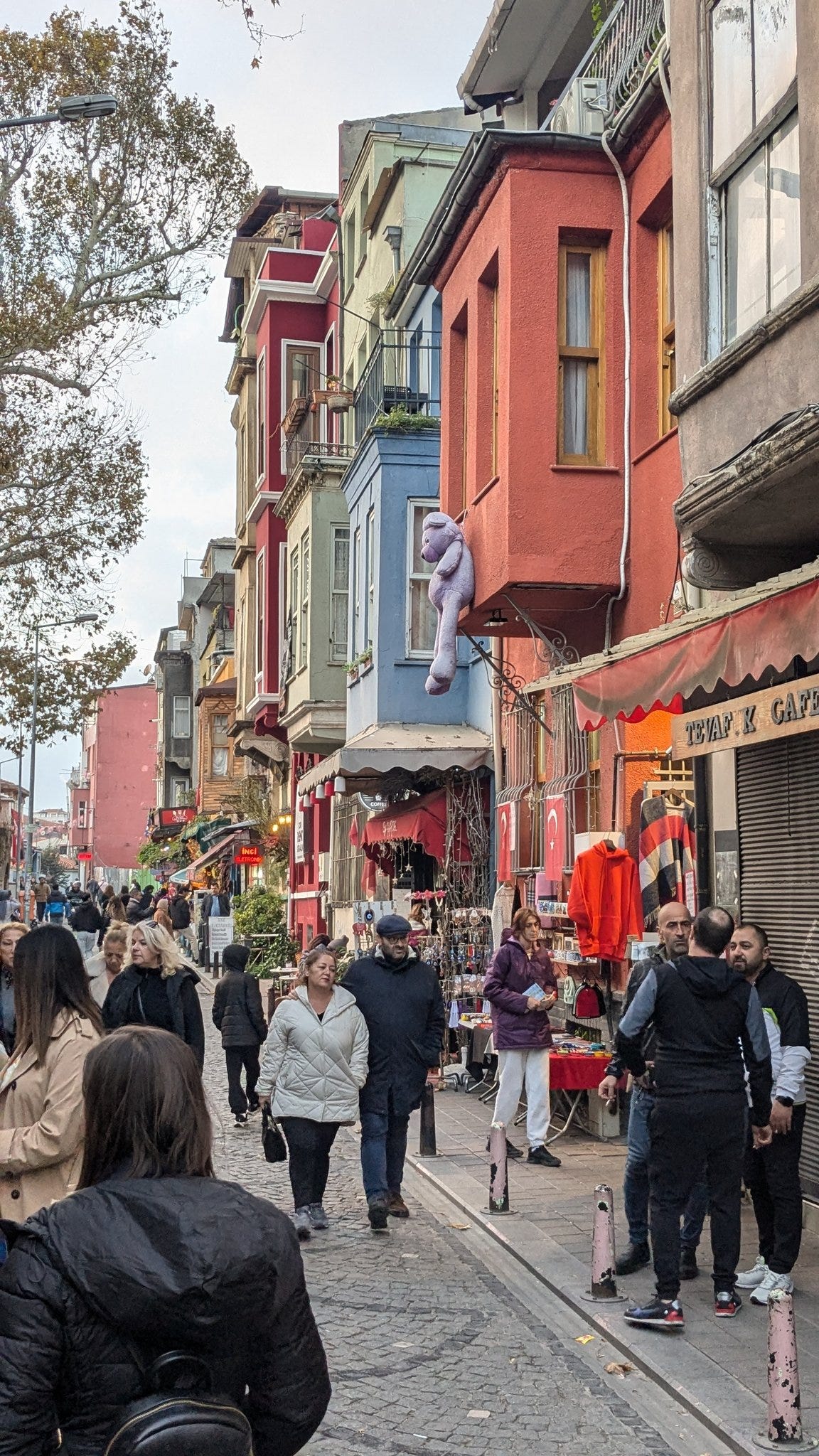
A Google search reveals that the artist responsible for Jack Spratt and his wife above was one of Turkey's top 20th century caricaturists. Caricature is a big deal in Turkey. Born in 1900, Ramiz Gökçe was active from 1920-50 and considered one of the two foremost practitioners of his generation. He's best known for, yes, our appealingly Rubenesque character in red. Dubbed Tombul Teyze (the Chubby Aunt), she and her main man Uncle Skinny appeared
frequently in many leading Turkish publications (plus some in the U.S.). Through this couple Gökçe commented on and critiqued Turkish society and mores, exposing contradictions and hypocrisies, just as R.F. Outcault did across the Atlantic in the United States with the Yellow Kid. It should be noted (as Steven Heller does here), that many of the cartoons Gökçe drew, notably ones for the satire magazines Karikatur and Akbaba, were anti-Semitic.
The pub above is one of a set of four that Gökçe produced in 1946.
Why are old magazines great? As mentioned, in the better ones you'll find extraordinary examples of work by talented, often underappreciated artists.
Speaking of the States, another magazine we scored was the November 1955 edition of Collier's. I focus on it because of the sheer quantity of quality content
in it. There's an interview of Bette Davis called “All About Me.” There's an article entitled “A Great Day in American History” by one John F. Kennedy,

